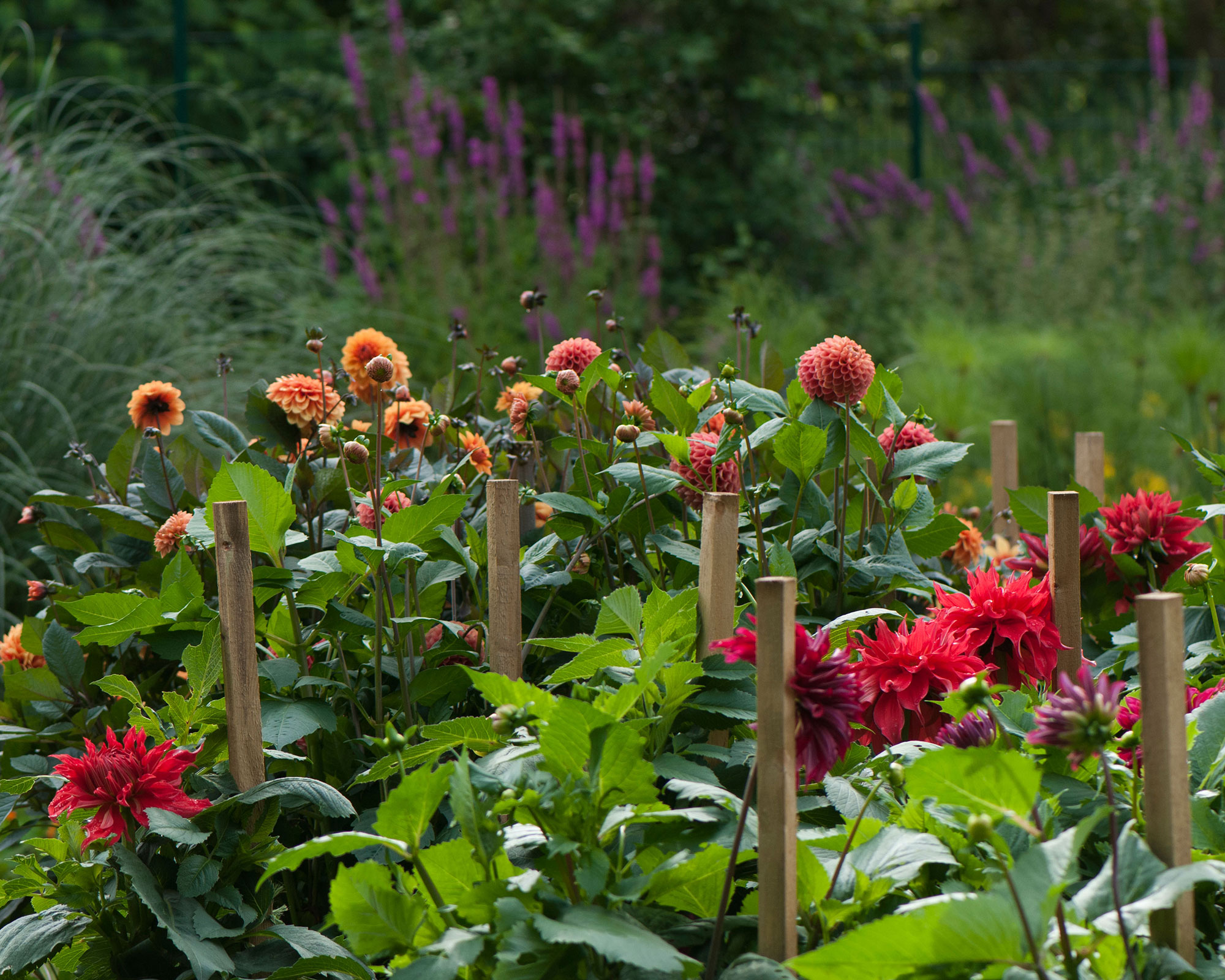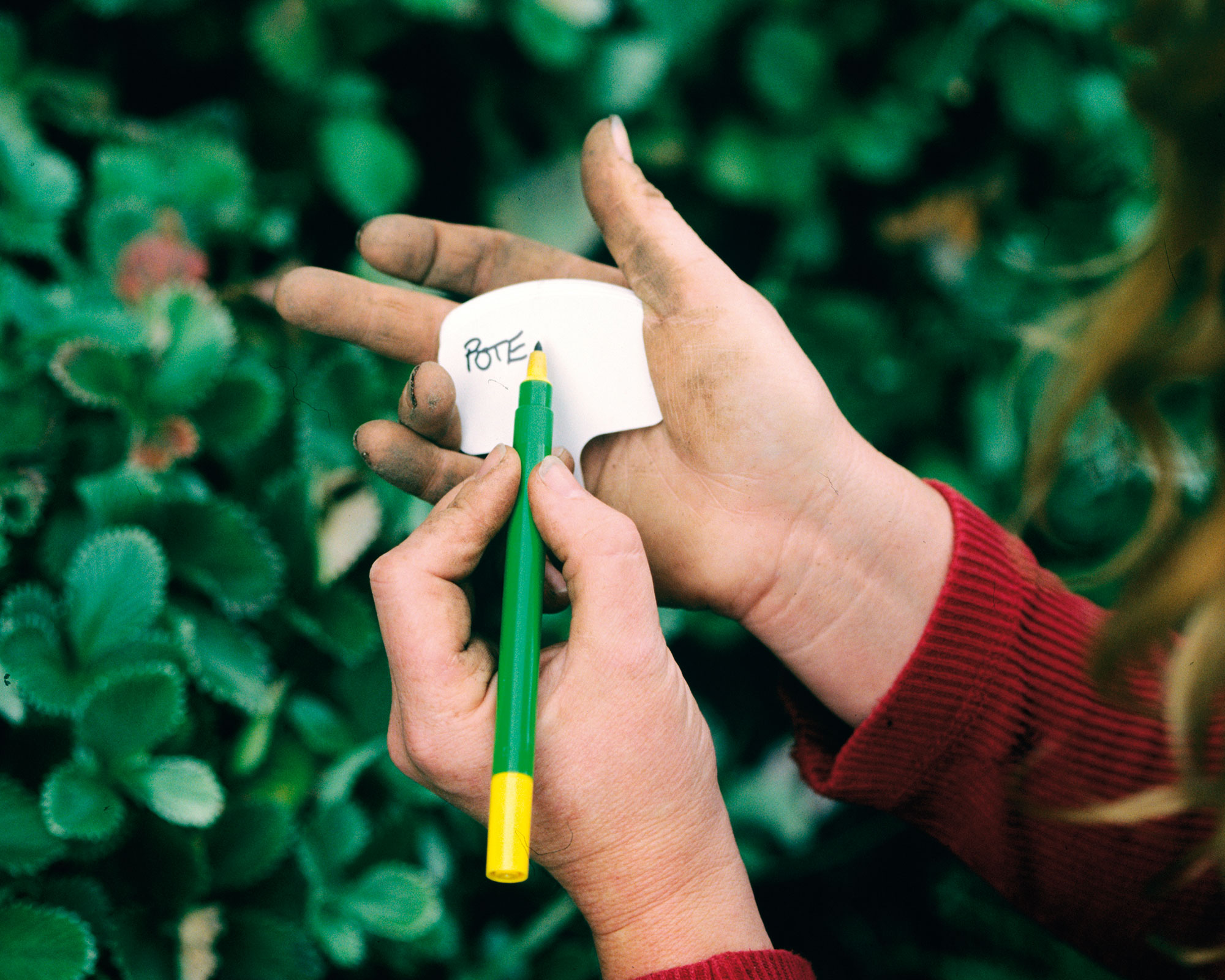Why this old-fashioned gardening tip could save your favorite plants this fall
Use a stake or pole to mark out the position of gone-to-ground perennials and you’ll never dig them over by mistake


Here’s a good old-fashioned tip for fall gardening. Before your herbaceous perennials go back down to ground level for the winter, mark their position with a stake, pole or stick in the ground.
But why should you add this simple task to your fall gardening checklist? 'It will avoid accidentally damaging these plants when you’re digging over flower beds or borders, planting spring-flowering bulbs or adding new plants,' says flower farmer and gardening expert Fionnuala Fallon.
If you have dahlias, Fionnuala also recommends using stakes to remind yourself that come springtime, you’ll need to protect emerging young shoots against slug and snail damage. 'If you’re leaving dahlia tubers in the ground overwinter, then do the same with these half-hardy, tuberous perennials before giving them a protective mulch,' she says.

Simple tip for marking out perennials
If your borders put on a glorious display during the summer months, you’re probably missing their wonderful colors and shapes.
When you’re cutting them back to ensure plants are protected from frost and will reach optimum performance again next year, adding a decorative stake will bring interest back to the garden.
You can even find stakes with built-in bird feeders, to help wildlife through the winter too. We like this adjustable shepherd's hook design from Amazon, which can be used for hanging everything from bird feeders to lanterns from its decorative hook.

Add a tag
'Marking perennials before the hard frosts of winter force them to die back is a trick seasoned gardeners know well,' says Jamie Rae, spokesperson for Green Cottage Garden. 'Clearly labeling your perennials will ensure that you don't accidentally weed them out when spring cleaning, and will help you plan your flower bed ideas for the next season.'
Jamie recommends using large labels, and writing with a permanent marker to ensure seasonal snows and heavy rain don’t erase the details. Alternatively, these aluminium plant labels from Amazon are hardwearing and can be re-used from one year to the next.

Set stakes securely
When winter winds howl, you don’t want all your efforts to be in vain, so make sure your stakes are firmly implanted in the ground and they won’t blow away, advises Jeremy Yamaguchi, CEO of Lawn Love.
In the long throes of winter it's easy to forget what beautiful perennials await rebirth beneath the ground, so Jeremy also recommends keeping a visual record.
'I also will usually either take a picture or draw a diagram of my garden as a back-up measure. That way, should something happen to the stakes, I can still figure out what plants are where in my garden borders just fine.'

Jayne Dowle is an award-winning gardening, homes and property writer who writes for publications including Sunday Times Home, Times Bricks & Mortar, Grand Designs, House Beautiful and The Spectator. She was awarded the Garden Journalist of the Year accolade at the Property Press Awards in 2021.
